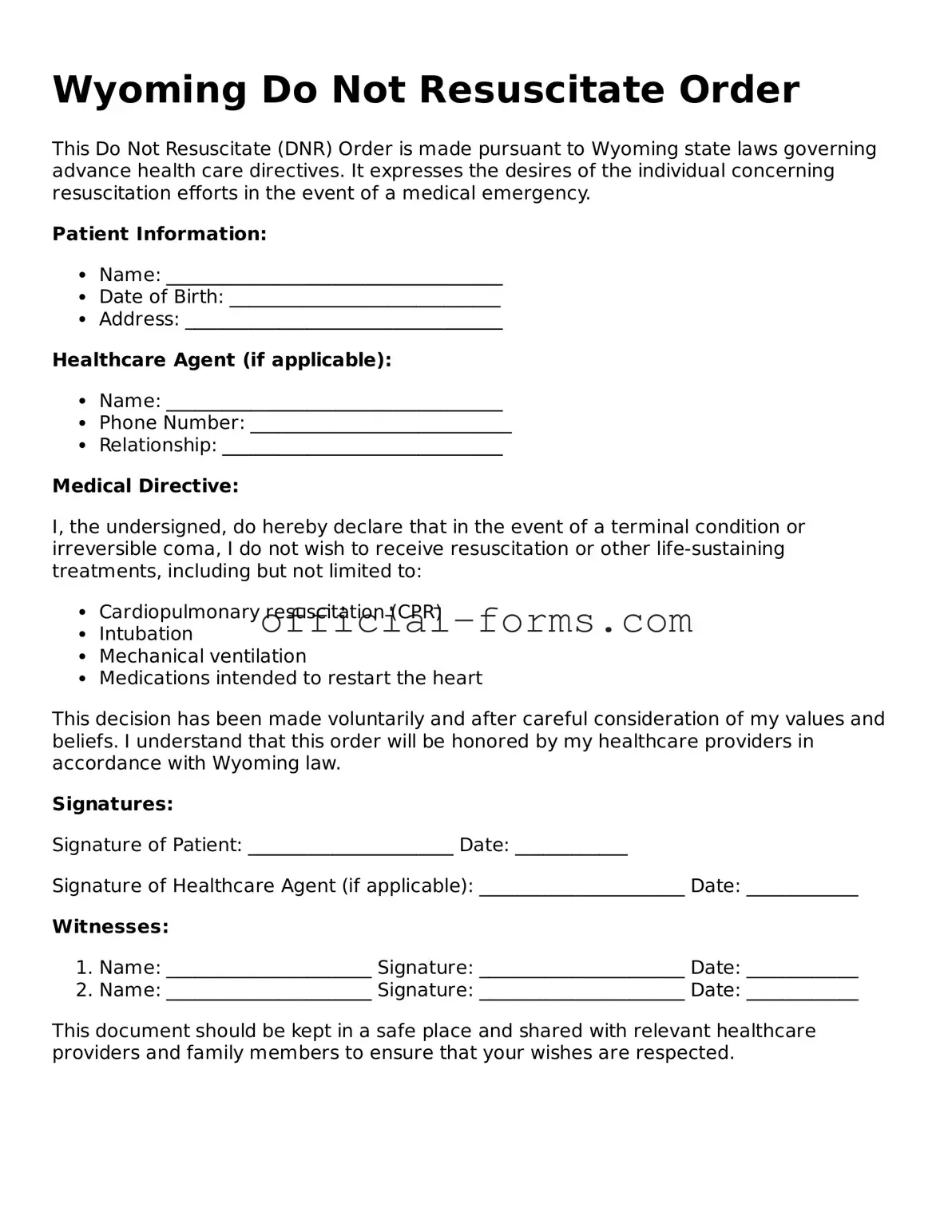Official Wyoming Do Not Resuscitate Order Document
A Wyoming Do Not Resuscitate Order (DNR) form is a legal document that allows individuals to express their wishes regarding medical treatment in the event of a life-threatening situation. This form ensures that, if a person's heart stops beating or they stop breathing, healthcare providers will not perform cardiopulmonary resuscitation (CPR) or other life-saving measures. Understanding the implications of a DNR order is crucial for both patients and their families as they navigate difficult healthcare decisions.
Open My Do Not Resuscitate Order Now
